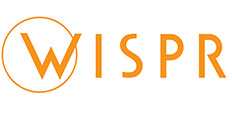The detailed observing schedule will be uploaded prior to the beginning of each perihelion pass. However, there may not be sufficient time to modify the detailed schedule for the upcoming perihelion passage after the download of the SRR from the preceding pass. For this reason, the observing objectives are defined for the next two perihelia.
The cruise/downlink portion of each orbit is broken into either cruise operations or science downlink operations. For cruise operations, the instruments may be powered on if the Sun-spacecraft distance is less than 0.82 AU. Periodically, during cruise operations the instruments may be powered off to support routine and special spacecraft activities. During cruise operations the fanbeam antenna (via X-band) will be used for spacecraft communications. Downlink rates will be limited and there is no plan to playback the SSR data.
During science downlink operations all instruments will be powered off and the high-gain antenna (via Ka-Band) will be used for playing back the SSR and retrieving all of the science data collected in the previous encounter(s). During both the cruise and science downlink periods, real-time spacecraft commanding will be done as needed to support routine and special spacecraft activities.
The table below outlines the planned DSN contact frequency for all phases of the SPP mission. Part of the planning process entails assigning downlink priority to telemetry. The SPP supports up to 10 levels of priority for downlink; a small percentage of science data comes down relatively quickly (days) after an observing window. The majority of science data comes down at lower priority and could take months to reach the ground. These priorities may vary from orbit to orbit and are managed by the SWG.
| Mission Phase | Contact Frequency | Duration |
|---|---|---|
| Launch & Initial C/O Spacecraft | Continuous | 2 weeks |
| Early Commissioning | 5 × 10 hr (per week) | 4 weeks |
| Cruise Operations | 3 × 8 hr (per week) | Weekly |
| Science Downlink | 10 hr/day | Entire science downlink period (Varies in each orbit leg, ∼4–21 days) |
| Solar Encounter Phase | 3 × 4 hr (per week) | Entire encounter period (∼2 weeks) |
| Venus Fly-Bys | 5 × 10 hr (per week) 10 hr/day |
V−5 to V− 1 weeks V−1 to V+ 1 weeks |
Science Operations Center
The WISPR Science Operations Center (SOC) at NRL utilizes the GSEOS software suite provided through APL to send command files to the SPP Mission Operations Center (MOC) for uplink to the spacecraft. At the SOC, WISPR personnel utilize a Heliospheric Imager Planning Tool (HIPT) to model observation plans and translate them to schedule files that are uploaded to the WISPR IDPU.
